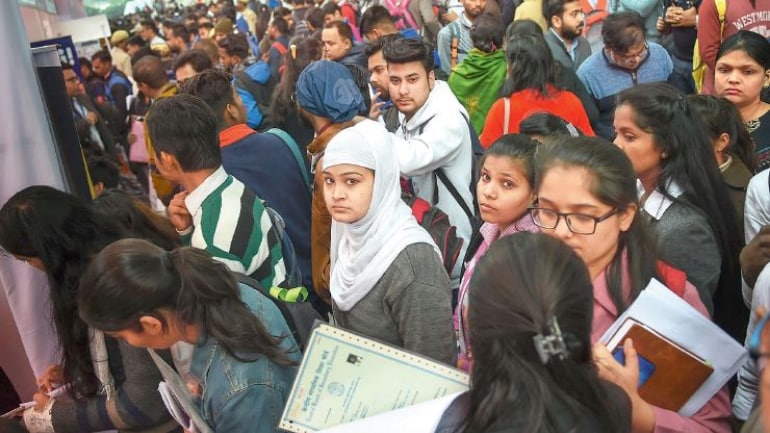Suppression of unemployment survey data, howsoever unpleasant, is not only undesirable, it is counter-productive.
- Prasanna Mohanty
- New Delhi
- January 31, 2019
- UPDATED: January 31, 2019 04:16 IST

The sudden resignations of two non-government members of the National Statistical Commission an autonomous body supervising statistical reporting by the government brings into sharp focus the Central government’s persistent attempt to suppress inconvenient truth about high unemployment in the country.
Suppression of unemployment survey data, howsoever unpleasant, is not only undesirable, it is counter-productive. Periodic data not only provides timely insights into the workings of the job markets and brings out different dynamics at play; it also helps in making intelligent policy and strategic decisions to overcome the situation.
SHARP RISE IN UNEMPLOYMENT
Even in absence of official data, it is widely known that unemployment has risen sharply in the past few years because of decisions like demonetisation and shoddy implementation of a badly designed GST, apart from factors that may be beyond the government’s control.
The ILO’s World Employment and Social Outlook: Trends 2018 report paints a gloomy picture. It says unemployed in India is expected to rise from 18.3 million in 2017 to 18.6 million in 2018 and 18.9 million by 2019.
But the numbers are likely to be far worse because its estimates are based on an unemployment rate of 3.5 percent, while the withheld 6thEmployment-Unemployment Survey (EUS) 2016-17 reportedly shows that it has gone up to 3.9 percent. Even the fifth EUS of 2015-16 had shown an unemployment rate of 3.7 percent much higher than that of ILO’s.
GOVERNMENT’S RESPONSE DISAPPOINTING
Having promised to create 10 million jobs every year before coming to power, the current dispensation has miserably failed to live up to it. Several of its employment-generating programmes have turned nonstarters. For example, the MUDRA loan scheme (started in 2015) was touted as a big initiative to generate self-employment, but closer scrutiny reveals it has neither improved credit flow to the MSMEs nor able to deploy funding available to it (with 40 percent lying idle).
The Start-up India scheme was announced with lofty claims of setting aside `10,000 crore for boosting capital flow to start-ups and SMEs in 2014. Nearly five years down the line, the official data shows only 72 start-ups were sanctioned `605 crore. Interestingly, this data was last updated in September 15, 2017. The Skill India programme is now a forgotten slogan, having failed to address the skilling needs of industries or jobs to the skilled. So is the case with the other big-bang initiative, Make in India.
In sheer desperation, the government started peddling EPFO numbers as evidence of new job creation, forgetting that this data is part of its job formalisation drive called Pradhan Mantri Rozgar Protsahan Yojana (PMRPY) the government paying full employers’ contribution of 12 percent towards Employees’ Provident Fund and Employees’ Pension Scheme for new employees since April 2016. This is not the same as new jobs as people switch jobs, duplicat-Govt needs to release job data Aspirants stand in queues during a job fair in New Delhi. ing EPF numbers. Old employment guarantee scheme, NREGA, which was disdainfully dismissed as a living monument to UPA’s failure, is the only saviour, continuing to provide 40-50 days of work to 4-5 crore households every year.
WHY JOB DATA IS NECESSARY
A reading of the quarterly reports on the employment scenario (QES), which too have been discontinued by the government, provides several insights into the job market. For example, such reports from 2009 to 2017 shows that certain sectors like construction and IT/BPO which were providing a bulk of employment for years stopped doing so in 2016 and 2017. Similar is the case with labour intensive sectors of leather, gems and jewellery, transport and handloom. On the other hand, more jobs are being created in health, education, trade, accommodation and restaurant sectors.
WHAT THE GOVERNMENT SHOULD BE DOING
What the government has not denied is that 12.8 million youth are joining the labour force every year. So, ideally, new livelihood opportunities should be created to that extent. But how to do that continues to remain a big challenge. It should release the job data, discuss and debate the findings, consult relevant stakeholders and prepare appropriate policy response and strategies to address the growing unemployment.








